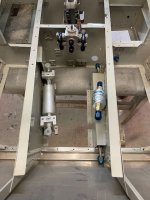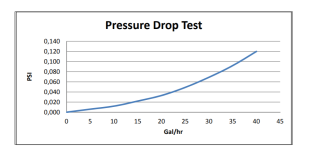Some attempts at responses below.
How would that filter fare when installed underneath the fuel filter in that forward area. Wouldnt exhaust gases/Heat be an issue?
Yes/No. The exposure to the outside conditions is fairly limited. The surface area exposed to the tunnel conditions will be the main driver; so, any filter installed in that area will have almost identical responses.
And Andair sell extension rebuild kits for their valves.
Yes. I incorporated one though in line with the limited elevation change minimization. Probably not needed but as mine was a virgin lay-out, it made sense to me. This was when the future of AvGas had no options.
How important would you guys say it is to lower the valve down to the fuel tank inlet elevation?
You'll probably be fine. Elevation losses are recoverable, though will utilize more tubing. Result = probably an unmeasurable savings in suction loss savings. As mentioned, mine was a virgin layout/installation so why not? Minimize those bends and try to keep non-straight fittings at zero; not always possible.
I do have a question about the gascolator. Is that one compatible with a high pressure fuel delivery system such as the EFII is? I’ve just never seen a gascolator being able to be used with a high pressure/constant flow fuel injection setup??
It's on the suction side so it doesn't matter. As mentioned, it made my layout much easier, gave me an "inspectable" element, low pressure drop (attachment below), etc. Not saying I'm right. Just giving the OP more options to clutter his decision process; one of my superpowers.
Pretty sure it isn’t going to make any difference what level you mount the pumps and selector. The standard pump is capable of 155 lph (about 41 gph) and it is running in a full return system; as soon as you turn the pump on, it will be cycling full flow through the fuel rail and back to the tank. A height difference of a few inches is not going to matter…
Bob is a tech councilor for good reasons but I'm going to have to respectfully disagree here. A flooded pump suction is very important. While in theory, it would remain so under any conditions, operational reality says otherwise. An undetectable leak (or one that leak in vacuum versus pressure) can cause havoc. While the fuel pump will have some available "pick-up", it will be very limited; never seen this value listed by any pump OEM BTW. Moving non-compressibles (even momentarily) are way better at drawing a partial vacuum than trying to move air. Secondly, this type of pump has sliding contact. The pumped fuel is the only lubricant so don't let it run dry under any circumstances. MoGas (intended design application) typically has more lubricity than AvGas so it's even more critical. Besides, an engine stumble when switching pumps or changing tanks is never good for one's undergarment hygiene.
Other thoughts:
The Andair valve is a good choice in-line with the previous thinking. It is a three way isolation valve (blocks the unused ports) versus a ported ball valve. Can't practically have lower associated losses.
The EFII filters will work fine but have some limitations in my and others opinions. My pre is the Aerolab. My post filter will be replaced with an inspectable element type. Might want to look at this thread.
https://vansairforce.net/community/showthread.php?t=206413
Best of luck. Keep us informed. Stay warm in the CH winter.






